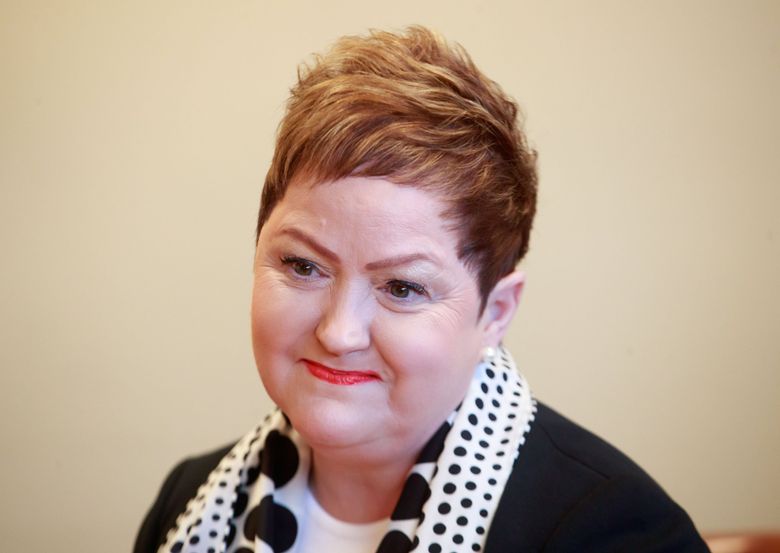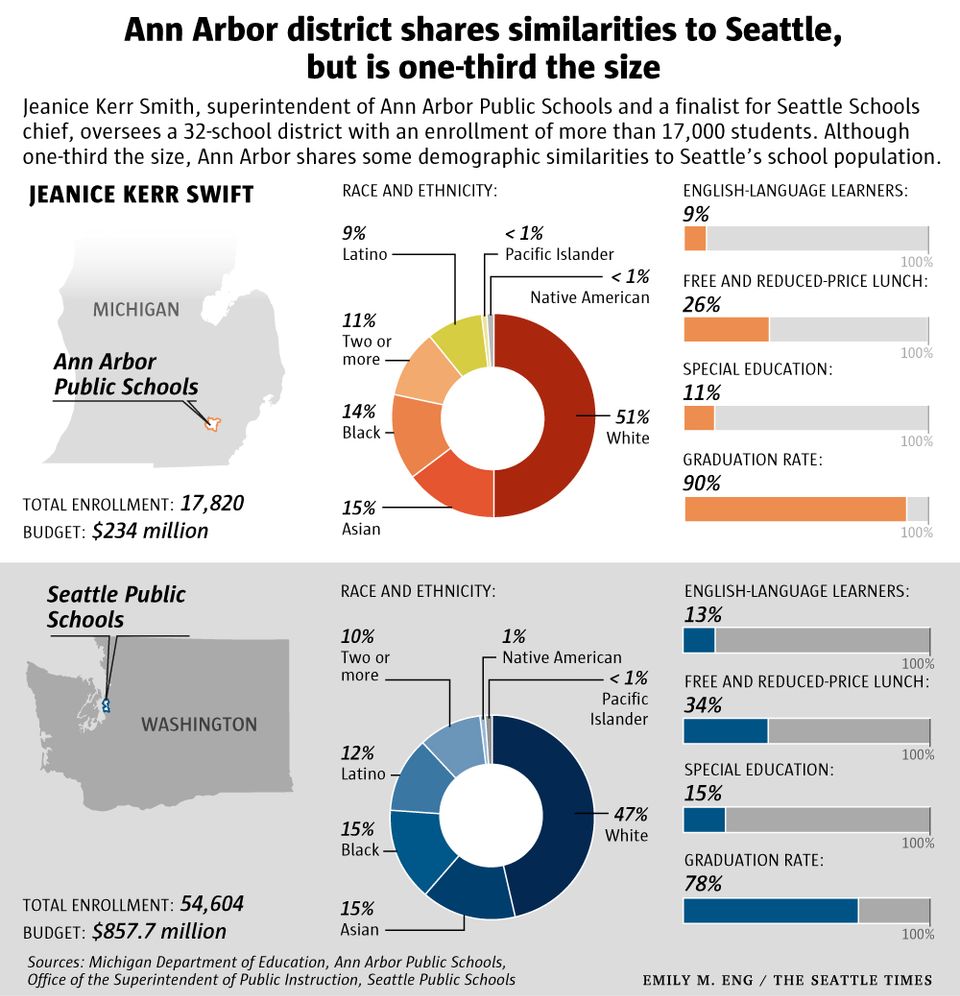Jeanice Kerr Swift did not get our top job, but she sent a message that Superintendent Juneau should hear!

“I call her our iron butterfly — she looks very delicate, a petite little woman, but watch out — she can come down like a hammer,” Baskett, vice president of the Ann Arbor school board.
Then I read Katherine Long’s article on Swift. The article described Ms. Swift as doing many of the things I believe Seattle needs .. standing up for all kids rather than focusing on the false promise of the segregated separate but equal system Seattle now has.
When Swift took her job in Michigan, she took a marketing approach, a “wildly successful,” listening tour.

These charts are interesting. The District counts all Asians as minorities. Treating immigrants as underprivileged makes no sense in a city where our Congress person is names Jayapal and where several schools board members come form affluent backgrounds. A Cambodian or an Eritrean is not the same as an immigrant from Mumbai or Beijing!
Some of what Ms. Swift learned is described in Katherine Long’s article,
Susan Baskett, vice president of the Ann Arbor school board, says changes she made to the curriculum at several low-performing schools made them more rigorous and desirable. She also addressed discipline policies that had resulted in a disproportionate number of suspensions for students who are low-income, African-American, Latino or with special needs.
The fact that Ann Arbor is now gaining enrollment, rather than losing it, is a testament to Swift’s work, Wigent said.
Swift started a project-based curriculum called STEAM (Science, Technology, Engineering, Art and Math) in a low-income K-8 school with just 175 students. Enrollment has shot up to 606 students now, Swift said — an “indicator of transformational success,”
She introduced an International Baccalaureate program in three of the district’s schools, elementary, middle and high school. All three are among the most diverse and highest-poverty schools in the district, Swift said, and her strategy was to provide “rich educational programs and opportunities for learning in some of the most vulnerable — high-poverty impact — parts of the district.”
During her tenure, Menzel said, academic performance in Ann Arbor schools improved every year, including a 32-point increase in SAT scores between 2016 and 2017 — although there was a slight decline in scores for some minority students between those two years.
In the past six years, suspension rates have dropped by 43 percent in high schools, and 60 percent in middle schools. “I would put our progress in Ann Arbor on out-of-school suspensions up against any district,” Swift said during a visit to Seattle last week. “I’m very proud of that progress.”
Swift told Long that she says she would seek to develop partnerships with Seattle’s higher-education institutions, its nonprofits, businesses and its arts groups. “We believe in the power of the arts to transform students, schools and communities,” she said. “I do think Seattle’s a place where I could go and lose myself in the work for a decade, and feel like I had a good impact,” she said.”
Swift’s message is one the whole School Board needs to hear. The idea that Seattle kids are “majority minority” is a myth. Our oh so white city does not have a majority of black kids. The enrollment in the District IS majority minority because of two things … kids from China, India, Korea, affluent kids, are counted as “minority” and the affluent majority has many incentives to send their kids to other schools.
But, in Seattle as well as Ann Arbor, ALL parents will want to send their kids to the SPS if the goal is excellence. Even better, our educated, young millennial parents will see the sharing and celebration of diverse cultures .. as an asset that, frankly, no private school or most suburban schools can match. Imagine giving the business community to support a central city high school with the high standards of my own Alma Mater, the Boston Latin School!
A great Seattle school need not look like BLS. There are many other options. We could, like Chicago, create a lab school working in conjunction with the UW. We could expand the cooperation with the community college to exoand on the opportunities for all kids to get a head start. We certainly should collaborate with the UW’s famous Robinson Center to create a better way of identifying gifted kids from disadvantaged homes.
The success in Ann Arbor may be a model for what Seattle can do!